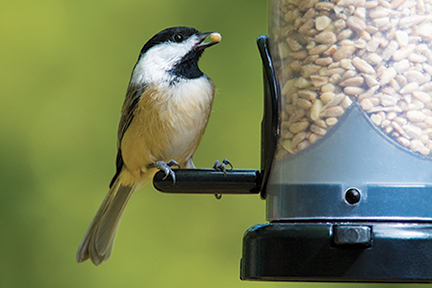May: Migrants and Locals
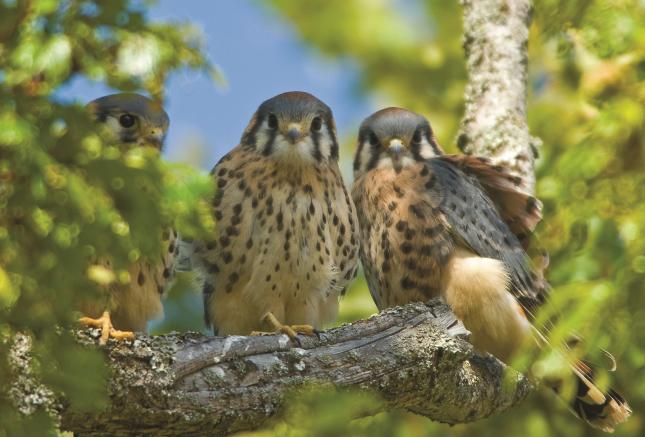 International Migratory Bird Day is May 11, the first of two migratory-bird days this year, in order to include both the northern and southern hemispheres in the event. The second is Oct. 5. One of this year's featured species is the American Kestel, a beautiful small raptor that is native to Southern California, including the Channel Islands. Though they are here all year, the population swells in winter as Kestrels migrate in from colder areas. Their primary diet is large insects, though they will take the occasional lizard or rodent, which is congruent with the theme of Migratory Bird Day, “Protect insects; protect birds.”
International Migratory Bird Day is May 11, the first of two migratory-bird days this year, in order to include both the northern and southern hemispheres in the event. The second is Oct. 5. One of this year's featured species is the American Kestel, a beautiful small raptor that is native to Southern California, including the Channel Islands. Though they are here all year, the population swells in winter as Kestrels migrate in from colder areas. Their primary diet is large insects, though they will take the occasional lizard or rodent, which is congruent with the theme of Migratory Bird Day, “Protect insects; protect birds.”
Left: Three juvenile American Kestrels almost ready to fly
It's time to think about providing water for the birds. It's not hot yet, but soon enough. Moving water, not only attracts birds, but also suppresses mosquitos. Our Water Wiggler will keep water moving in your birdbath all-day.
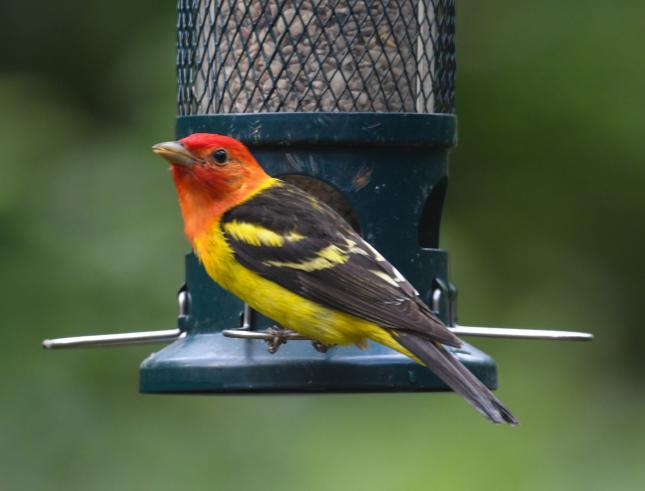
Local fruit-eating birds are back in force. Tanagers, orioles and grosbeaks all appreciate an offering of fresh fruit. Orioles particularly go for orange halves, while they all like apples.
Right: A Western Tanager is hoping the feeder has some fruit too
Beside looking for bits of fruit, Orioles and Grosbeaks are nesting, but there the similarity ends. One is high in the trees while the other usually is closer to the ground. Orioles suspend their woven hanging nests as much as 40 feet up in trees, particularly in palms, while Grosbeaks' loose construction of twigs is often found about 20 feet up a smaller tree or bush. Watch for parents flitting in and out of trees to feed their hatchlings.
If you are hearing bird calls at night, they likely are Northern Mockingbirds, singing desperately at all hours to be sure to get a mate. Their repertoire of calls can be impressive, up to 70 different bird songs.
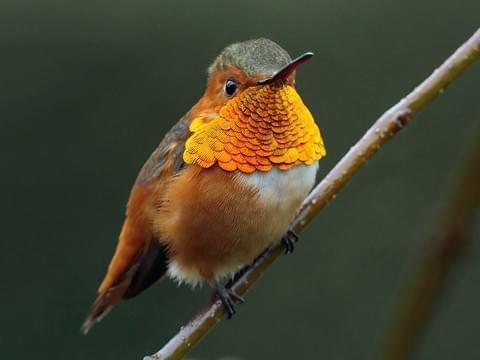
They've been nesting since January, but right now is the peak of the breeding season for our local hummingbirds, the Anna's and Allen's. If working around bushes, watch for their tiny soft-cup nests, often in a V between two branches. The eggs are tiny also, the size of jelly beans. If a baby falls out of the nest, try to put it back, if it is high enough to be safe from predators. The mother will feed the baby, if she can. If the mother doesn't come back, call us at 424-272-9000, and we will direct you to hummingbird rescue.
Left: a male Allen's Hummingbird, shows off his beautiful gorget, which shows up best in bright sun.
The House Finches, who happily built their nests under your eaves, now have been feeding their young for several weeks. The first batches of fledglings are ready to leave the nests, and the parents will escort them to your feeders. Soon you may see a small crowd of eager young finches trying their first taste of sunflower chips.
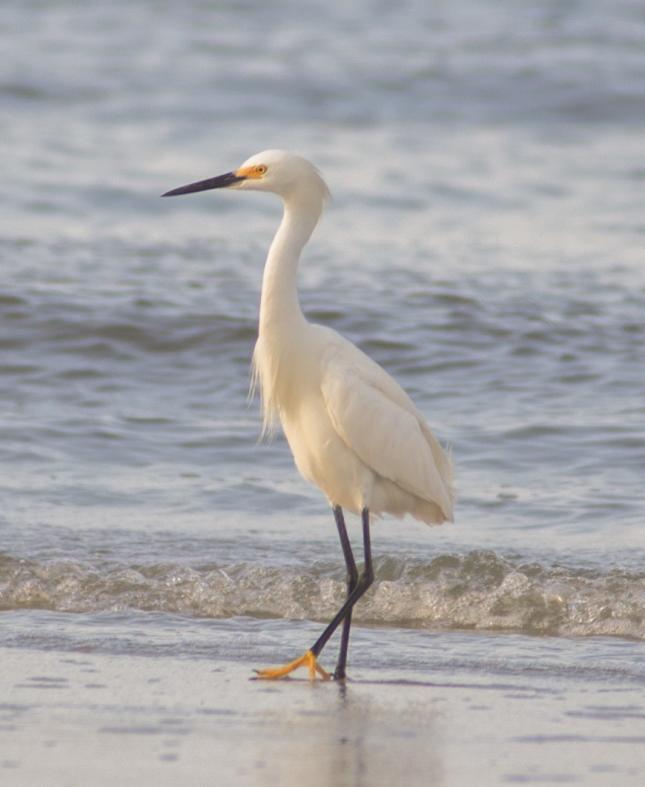 Right: This Snowy Egret is a little bigger than the visiting Cattle Egret, whose bill is pale orange and who also sports a pale-orange streak from its head down its back.
Right: This Snowy Egret is a little bigger than the visiting Cattle Egret, whose bill is pale orange and who also sports a pale-orange streak from its head down its back.
This is the time of the year when unusual birds can appear, if their migration takes a wrong turn. The Ballona Wetlands has seen two rare visitors, a Western Cattle Egret and a Red Knot. The egret is about the same size as our local Snowy Egret, about 20 inches tall. It is distinguished by an orange bill and, in breeding season, by a broad pale-orange streak from the bill to the nape of its neck. They are more birds of fields rather than swamps and follow herds, looking for bugs from the cattle. This is not the first time these egrets ventured into new territory. They are natives of Africa and arrived in the Americans in the 1950s. Red Knots are plump sandpipers that turn bright salmon from their cheeks down the front to their tails in breeding season. They breed far north, often on tundra, so this individual may be a little late to the dance.
The Least Terns have arrived at their selected beach nesting sites.

